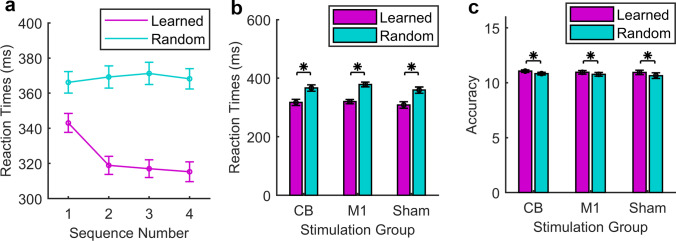Fig. 2.
a Susceptibility effect. Mean reaction times (RTs) across all groups over the nine blocks at baseline, separately for the four sequences. RTs were faster during the learned sequences. Slower RTs during the first sequence were due to the susceptibility effect. b Baseline performance measure for RTs. All three stimulation groups showed motor sequence learning, with faster RTs during learned than random sequences. Baseline performance did not differ between the groups. c Baseline performance measure for accuracy as mean number of correct items in a sequence (maximum 12). No baseline group difference in accuracy. Greater accuracy during learned than random sequences suggested no speed–accuracy trade-off

